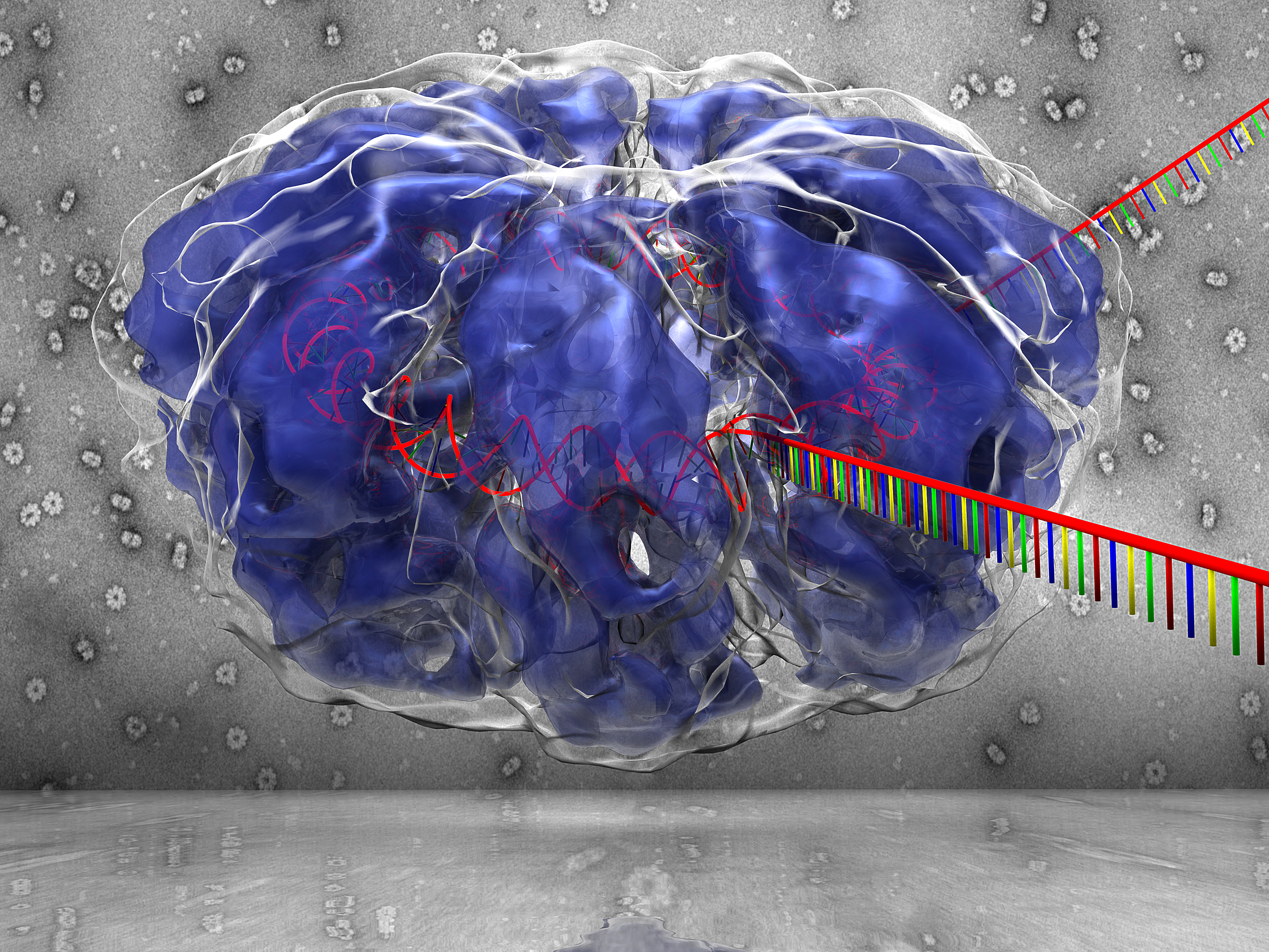HSV-1
Snapshots of Life: New Target for Herpes Treatment?
Posted on by Dr. Francis Collins
 Something about this image reminds me of that wacky and infectious old song: “It was a one-eyed, one-horned, flyin’ purple people eater …” Of course, this purple blob isn’t a people eater, but it does happen to be infectious. What you see here is a 3D rendering of a protein that the herpes simplex virus 1 (HSV-1)—one of two herpes viruses that cause genital herpes and cold sores—depends upon to infect human cells.
Something about this image reminds me of that wacky and infectious old song: “It was a one-eyed, one-horned, flyin’ purple people eater …” Of course, this purple blob isn’t a people eater, but it does happen to be infectious. What you see here is a 3D rendering of a protein that the herpes simplex virus 1 (HSV-1)—one of two herpes viruses that cause genital herpes and cold sores—depends upon to infect human cells.
When a cell is infected with HSV-1, the virus inserts its DNA into human cells, periodically coming out of dormancy to make more copies of itself. However, errors sometimes occur when the DNA is replicated. When that happens, an HSV-1 protein, dubbed infected cell protein 8 (ICP8), stitches broken pieces of DNA back together. That’s what you see depicted in this schematic, which shows two single strands of DNA (red with multicolor bases) entering an ICP8 complex (purplish blue) to be reannealed into DNA’s familiar double-stranded helix (red).
Share this:
- Click to share on LinkedIn (Opens in new window)
- Click to share on Pinterest (Opens in new window)
- Click to share on Tumblr (Opens in new window)
- Click to share on Reddit (Opens in new window)
- Click to share on Telegram (Opens in new window)
- Click to share on WhatsApp (Opens in new window)
- Click to print (Opens in new window)
